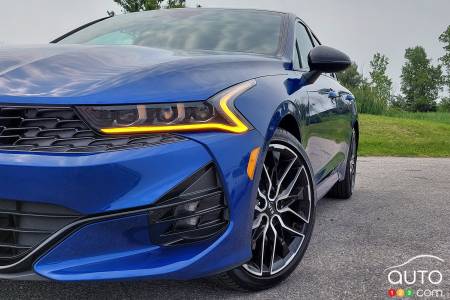- Daytime running lights help reduce the risk of being involved in a collision by 8.8 percent, according to a new study.
- At higher speeds and at night, the risk reduction rises to over 20 percent.
- DRLs have been mandatory on new vehicles sold in Canada since 1989.
Daytime running lights are not new to Canada, which was one of the first countries to make them mandatory in new vehicles. The logic is simple and self-evident: A vehicle driven with its headlights on during the day is more visible and less likely to be missed by other motorists.
A recent study conducted by the Monash University Accident Research Centre in Melbourne, Australia confirms it. It found that vehicles equipped with automatic DRLs are less likely to be involved in a crash related to visibility issues than those without.
The study, published in the Journal of Safety Research, used police data from New South Wales, Victoria, Queensland and Western Australia to estimate the extent to which automatic DRLs reduce the risk of being involved in a multi-car (daytime) crash where visibility is a factor.
The study found a statistically significant reduction in risk, of 8.8 percent overall. The highest percentage of reduction was noted at higher speeds and at daybreak or dusk.
The data used for the study was for police-reported injury crash statistics for incidents between 2010 and 2017, which were shared online on February 8. The information made public included vehicle identification numbers (VINs), which allowed the study’s authors to determine which vehicles were equipped with daytime running lights.
In daylight, the data revealed a 7.6 percent reduction in crash risk, while at dawn or dusk, the reduction was far higher, at 20.3 percent. And in such circumstances, when speed is higher than 75 km/h, the risk reduction reaches 23.8 percent.
Of course, we know that numbers can be cherry-picked to tell the story one wants to tell, so the data here is worth what it’s worth. It’s also worth remembering that given the safety technologies now present in modern vehicles, other systems can intervene to prevent or avoid accidents. Nevertheless, all the data collected shows that when a vehicle is equipped with daytime running lights, it is more visible to other motorists and is involved in accidents less often.
If your vehicle doesn’t have automatic DRLs, then, it’s a no-brainer to turn them on when you drive. It will make your driving experience safer for you and for others.



